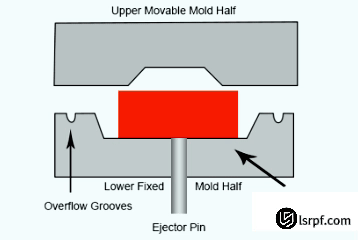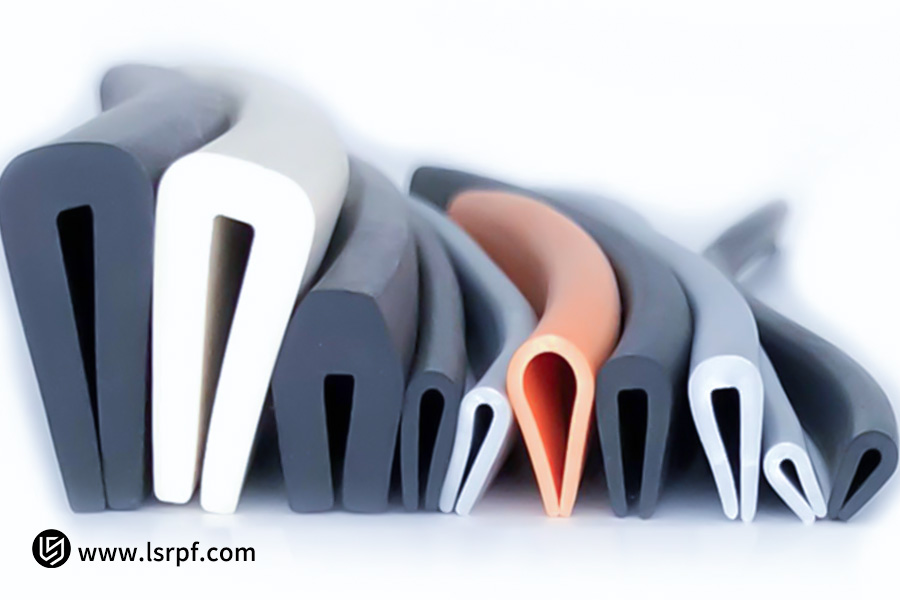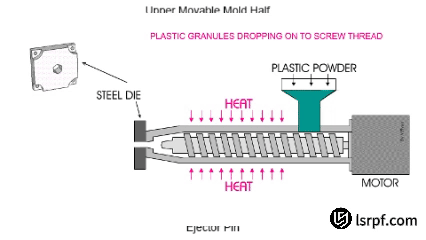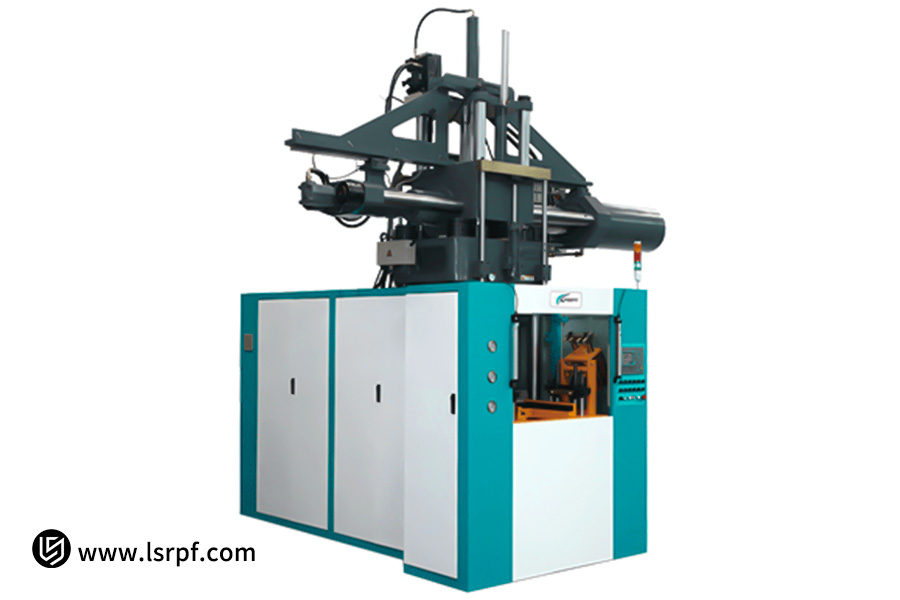From car tires to medical catheters, rubber items are all around us in our modern lives. But who takes a raw rubber piece and turns it into a precision industrial part? The answer is rubber molding technology, the vital process that does it all. In this article, we will look at rubber molding principles, methods, and uses, and uncover the secrets of the creation of elastomers.
Quick Reference: Choose Your Tap at a Glance
| Elements | Core Content |
| Definition | A manufacturing process that involves the use of a process to shape rubber materials into pre-determined shapes, sizes, and properties. |
| Purpose | To create eco-friendly products with certain functions (e.g., elasticity, sealing). |
| Principle | Utilizing the rubber's plasticity, the rubber is filled into a mold under heat and pressure and then vulcanized and cross-linked to cure. |
| Steps | Raw materials → Mixing → Molding → Vulcanization → Post-processing |
| Methods | Molding, injection molding, extrusion, calendering, etc. |
| Uses | Automotive, industrial, medical, and consumer goods (tires, seals, gloves, and shoe soles). |
Why Trust This Guide? Practical Experience From LS Experts
At LS, we're not merely rubber recipe formulators and process technicians; we're also innovators of their extreme applications. During the last ten years, we have been closely engaged in more than 5,000 rubber component applications, from tiny medical catheter seals to colossal construction equipment anti-vibration mounts, personally confirming the limits of hundreds of rubber compounds and molding techniques. Simply having a mold and the capacity for injecting glue simply will not satisfy your high standards, from medical precision of ±0.02mm to stable molding of extremely huge, bespoke parts. We appreciate more than anyone that it requires an unprecedented difference in material science and process control to overcome the delicate tactile issues of silicone buttons and to overcome the 300°C-resistant fluororubber fuel line seal failure with the passage of time.
LS has benchmarked the industry in its actions. When a medical client ordered mass production of an implantable silicone diaphragm (with ultra-thin wall thickness 0.1mm, zero bubble defect specification), some of its suppliers shelved the project due to yields of less than 30%. But LS, with its patent vacuum micro-injection molding technology and nano-scale surface treatment technology, maintained a yield rate of 98% all along. Not only does this handbook include our library of thousands of rubber failure examples, but it also relies on the mass production success of LS for harsh working environments. Our innovations extend beyond the mere conversion of rubber compound into a mold. Rather, we employ material modification, mold design, and precision control technologies to convert ideas into very reliable finished products.
Basic Principles and Core Elements of Rubber Molding
Rubber Molding: The Science of Transforming Sticky Materials into Useful Products
Imagine transforming sticky raw rubber into a springy tire or seal. This magic happens through vulcanization—rubber's most significant chemical process of improvement. The nature of the transfiguration from raw rubber to vulcanized rubber.
Vulcanization: Rubber's "Superpower" Process
Main Function: Uses sulfur or peroxide to form molecular bridges between rubber chains.The major chemical reactions responsible for the final properties of rubber.
Transformation:
Convert raw rubber (brittle and sticky) to vulcanized rubber (elastic and hard). 5-10 times more powerful, resistant to heat or oil, and possesses "memory" (returns to original shape).
Importance: Without vulcanization, rubber is like chewing gum—permanently deformed by pressure.
The Golden Trio: Heat, Pressure, and Time
These three factors must work perfectly together.
| Factor | Effect | Real Impact |
| Heat | Starts crosslinking | Too low: Rubber is still soft. Too high: Burns or embritlles. |
| Pressure | Presses the rubber into the mold details. | Expels air bubbles. Prevent defects(gaps, spongy texture) |
| Time | Completes the reaction. | Too short: Product is weak, resulting in "undercure." Too long: Rubber is brittle, resulting in "overcure." |
Pro Tip: Plants employ sensors to determine the sweet spot for best results (best cure time).
Molds: Masters of Shape
The mold's main purpose: It gives the final product shape, size, and surface texture. Molds are precision metal "cookie cutters" that give the product its precise dimensions (even down to 0.01 mm!), impart surface textures (smooth, grippy, or branded), and maintain consistency over thousands of parts.
No molds, no complex shapes: Easy rubber sheets require no mold; complex parts (such as O-rings and shoe soles) require custom molds. Car wipers to phone cases, all the rubber items you use rely on this science.
Main Rubber Molding Process Methods
Natural or synthetic, raw rubber is subjected to a process of mixing, shaping, and curing (or vulcanization) to produce moldable rubber. This produces a material that is highly malleable, resilient, and elastic. The following is a table of the main rubber molding process methods.

| Method | Principle | Feature/Application |
| Compression Molding | Preformed rubber compound is put into a mold cavity that has been heated, and then the mold is closed and pressurized for vulcanization. | Fairly simple equipment and inexpensive molds. Appropriate for small to medium batch sizes, very large size, or thick-walled parts. Fairly low efficiency. |
| Transfer Molding | The rubber compound is preheated and plasticized in the feed cavity. The compound is then injected via the flow channel into the closed mold cavity by means of plunger pressure for vulcanization. | Higher product dimensional accuracy, less flash, and ability to mold more complex parts and those with inserts. Higher efficiency than compression molding. |
| Injection Molding | Similar to plastic injection molding, the rubber compound is plasticized in the barrel and is injected into the closed heated mold cavity under high pressure and speed through the screw or plunger for vulcanization. | Highest efficiency, high degree of automation, high precision, minimal flash, and suitable for large-size, complex, and precision components. Highest equipment and mold costs. |
| Extrusion | Plasticization of the rubber compound is achieved in an extruder and is continuously extruded through a die into a profile (tube, rod, strip, or profile) of constant cross-section. Curing of the profile is achieved by subsequent vulcanization (hot air, microwave, or salt bath). | Applications: Hoses, sealing strips, wire and cable jacketing, profiles, etc. |
| Calendering | The rubber compound is run through a succession of rotating hot rolls, calendering it into a film or fabric covering (e.g., tire cord) of desired thickness and width. | Applications: Film, tape (e.g., innerliners), and certain sheet materials. |
| Dip Molding | A mold (male mold) is dipped into a latex or rubber solution. It is withdrawn and dried, then vulcanized to produce a hollow product (e.g., gloves, balloons, and condoms). | Ideal for thin-walled, hollow, and disposable items. |
Rubber Materials: From Raw Rubber to Moldable Compounds
Rubber materials
They are generally divided into two categories: natural rubber and synthetic rubber. Natural rubber (NR), which is primarily derived from rubber trees, possesses excellent elasticity, abrasion resistance, and tensile strength, and is extensively used for tire and hose production. Synthetic rubber (SBR, BR, NBR, EPDM, CR, IIR, FKM, Silicone, AU/EU, etc.) is manufactured artificially and has a wide range of varieties with various properties to meet specific requirements such as oil resistance and heat resistance. They are widely used in the automotive, industrial, and medical industries.

The primary raw materials of rubber products are raw rubber, compounding agents, fiber materials, and metal materials. Raw rubber is the raw material; compounding agents are auxiliary materials used for enhancing some performances of rubber products; fiber materials (cotton, linen, wool, and other man-made and synthetic fibers) and metal materials (steel wire and copper wire) are the skeleton of rubber products, with the action of strengthening mechanical strength and restricting deformation. Next, I will concentrate on the significance of compounding in rubber product manufacturing, the primary compounding agents, and the mixing operation. I hope this will be useful.
The Importance of Compounding
It is utilized to enhance processability, minimize cost, and improve or impart certain properties like strength, wear resistance, oil resistance, weather resistance, and flame retardancy.

Vulcanization System: Vulcanizing agents (sulfur, peroxides, etc.), accelerators, and activators (zinc oxide and stearic acid, for example).
Reinforcing Fillers: Silica, carbon black, calcium carbonate, etc. (for strength and wear resistance improvement and cost saving).
Protective System: Antiozonants, antioxidants, and light stabilizers (to postpone aging).
Softening Plasticizers: Enhance processing fluidity and low-temperature performance.
Processing Aids: Tackifiers, dispersants, etc.
Mixing Process
The operation of evenly blending raw rubber or plasticized rubber with other compounding agents. The aim is to improve the physical and mechanical properties of rubber products, processing performance, and production economy. It is the process of dispersing solid and liquid materials, including fillers, reinforcing agents, accelerators, and vulcanizing agents, evenly into the rubber so that the rubber has consistent properties. Improper mixing may cause scorching and frosting problems in further processing and affect product quality.
Rubber Molding Equipment and Molds
Main Molding Equipment
Platen Vulcanizer:
Similar to a giant iron, it utilizes upper and lower heated plates to produce high temperature while at the same time exerting clamping force to compress the rubber. It can be utilized in compression molding (e.g., seals), transfer molding (with runner systems), and heated plates. It is simple to use and suitable for small to medium-volume production.
Rubber Injection Molding Machine:
Like a medical syringe, the plasticizing unit melts the rubber, the injection unit provides high-pressure injection into the mold, and the clamping unit closes the mold. It can be utilized to make precision and complicated parts (e.g., oil seals for automobiles) with high efficiency and little waste.

Extruder:
Like a noodle machine, the rotating screw pushes the rubber forward through the die to create a continuous shape (e.g., hose, seal strip). For extrusion molding, it consists of a screw, barrel, die, and heating and cooling system. Its heating and cooling systems precisely control temperature to ensure stable extrusion.
Calender:
Composed of multiple precision rollers, like a rolling pin assembly, the calender presses the rubber compound into a uniform sheet or coats it on a fabric surface (such as tire cord). The roller gap can be adjusted to 0.1mm to control thickness.
Tooling
Material: Usually made of high-strength mold steel such as P20, H13, or aluminum alloy. Suitable for trial molds and small batches.
The critical design: Considerations include cavity design, parting surface, runners/gates (injection/transfer), venting, heating/cooling systems, and ejector mechanism.
| Element | Function |
| Cavity | The "negative space" in the molded part, which determines the final shape and size. |
| Parting Line | The point at which the mold opens, determining flash and ease of demolding. |
| Runner/Gate | The "channel" which guides the rubber material into the cavity (for injection/transfer molds only). |
| Vents | Release air in order to avoid air bubbles (width around 0.02mm). |
| Cooling Channels | Control mold temperature and reduce cycle time. |
| Ejector Pins | Force out the completed product from the mold. |
Cost and Lifespan: These represent major investments in rubber molding, having a direct effect on product quality and productivity.
Molds are a fundamental investment in rubber molding (representing 30-60% of the cost of production). Steel molds of high quality can operate for more than one million cycles. Defects in design can result in defective products and downtime in production, adding significant cost.
Process Parameters and Control
Key Process Parameters
Temperature: Barrel temperature (injection), mold temperature, and curing temperature. These directly affect curing speed and compound flowability.
Pressure: Injection pressure, holding pressure, and clamping force. These provide filling, compaction, and prevention of flash.
Time: Injection time, holding time, and curing time. These provide for complete filling and adequate curing reaction.
Compound Condition: Always pay attention to preheating temperature, plasticity, or Mooney viscosity.
Importance of Process Control
During production, guarantees batch-to-batch consistency and minimizes scrap. This entails the accurate measurement and documentation of temperature, pressure, and time.
Use of the Rheometer: Rheometers are primarily used in rubber formulation design, production quality control, and new product development. They analyze changes in rubber properties during the vulcanization process to evaluate and optimize rubber materials. It is used in the laboratory and on-line to monitor the curing properties of the rubber compound, such as T90, which is the optimal curing time.
Applications of Rubber Molded Products
| Field | Application |
| Automotive Industry | O-rings, oil seals, gaskets, shock absorbers, suspensions, hoses, weatherstrips, wiper strips, and tires (tread extrusion/molding). |
| Construction and Engineering | Bridge bearings, expansion joint seals, building sealants, waterproof membranes, and shock absorbers. |
| Industrial Equipment | Various seals, conveyor belts, rubber rolls, linings, shock-absorbing components, and flexible connectors. |
| Electronic and Electronics | Insulation and jacketing of wire and cable, buttons, sealing rings, and insulating gaskets. |
| Medical | Medical catheters, IV tubing, seals, gloves (impregnated), pacifiers, and prosthetic parts. |
| Consumer Products | Shoe soles, toys, kitchen items (e.g., spatulas), sports equipment handles, and diving gear. |
| Aerospace | Fuel system components, shock absorbers, and high-performance seals (requiring specialty rubbers like FKM). |
FAQs
1. What is the main difference between rubber molding and plastic molding?
The fundamental distinction is vulcanization (crosslinking). Plastic molding, i.e., injection molding and extrusion, is mainly a physical process of melting and cooling to fix the shape, whereas rubber molding is a chemical process and has to have a vulcanization step included. Plastics flow plastically, whereas rubber flows elastically. In the case of plastics, the product is finished as soon as the molding operation is finished; rubber molding, however, needs a vulcanization step after the molding operation.
2. Which is the best rubber molding process?
Injection molding is generally the most effective process, especially for high volume, complicated shape, precision small parts. It also enjoys a high degree of automation, short molding cycles, and minimum waste. The second most effective molding process is transfer molding. Compression molding is less effective than injection molding for molding rubber.
3. How do I choose the right rubber molding process for my product?
Depending on product shape, if the product is complex or has inserts, injection or transfer molding is the preference. If the product is a simple part, molding is the preference. For a constant cross-section, extrusion is the preference. For thin-walled hollow products, dipping is the preference. On the basis of production volume, for large series, injection molding is the preference. For small and medium series, compression or transfer molding is the preference. For high dimensional accuracy, injection molding or transfer molding is needed. On the basis of cost, injection molding equipment is the most expensive, and the least expensive is compression molding. On the basis of product material properties, i.e., high-viscosity or heat-sensitive rubbers, compression or transfer molding can be selected. On the basis of product size, large and thick products are mostly compression molded.
4. Why must rubber products be "vulcanized"? Is it possible to produce them without vulcanization?
No. Unvulcanized (raw) rubber has linear molecular chains and therefore has low strength, easy deformability, poor wear and solvent resistance, and high temperature sensitivity, and is of no practical use. Vulcanization interconnects the linear molecular chains into a three-dimensional network structure through chemical crosslinking bonds and imparts to rubber such valuable properties as high elasticity, high strength, wear resistance, solvent resistance, temperature resistance, and dimensional stability. Without vulcanization, there would be no useful rubber products.
Summary
Rubber molding is a key manufacturing process that converts raw rubber into product with exact shape and excellent performance by the process of vulcanization. It directly affects product life and reliability. The selection of a rubber molding partner is a strategic choice that affects your product's core performance.
Obtain top-grade rubber molding solutions from LS! Founded on over 150 years of experience, cutting-edge technology, and rigorous quality control, we ensure the superior quality of your rubber parts. Contact the LS expert team today! Regardless of whether you require series parts or customized components, LS can provide efficient and stable solutions to enhance your product's competitiveness. Choosing LS is choosing a guarantee of quality and technology!
In the face of these higher challenges, LS's CNC turning service is your indispensable ultimate "tool". It represents industrial-grade precision, unparalleled repeatability and efficient productivity, allowing your design ideas to be perfectly, consistently and efficiently realized. Choosing LS is to inject industrial-grade precision power into your extraordinary craftsmanship.
Upload your design drawings now and get an instant CNC turning quote (cnc turning price), let LS be your strong backing in pursuit of ultimate woodworking precision!
📞Tel: +86 185 6675 9667
📧Email: info@longshengmfg.com
🌐Website:https://lsrpf.com/
Disclaimer
The contents of this page are for informational purposes only.LS seriesThere are no representations or warranties, express or implied, as to the accuracy, completeness or validity of the information. It should not be inferred that a third-party supplier or manufacturer will provide performance parameters, geometric tolerances, specific design characteristics, material quality and type or workmanship through the LS network. It's the buyer's responsibilityRequire parts quotationIdentify specific requirements for these sections.Please contact us for more information.
LS Team
LS is an industry-leading companyFocus on custom manufacturing solutions. We have over 20 years of experience with over 5,000 customers, and we focus on high precisionCNC machining,Sheet metal manufacturing,3D printing,Injection molding,Metal stamping,and other one-stop manufacturing services.
Our factory is equipped with over 100 state-of-the-art 5-axis machining centers, ISO 9001:2015 certified. We provide fast, efficient and high-quality manufacturing solutions to customers in more than 150 countries around the world. Whether it is small volume production or large-scale customization, we can meet your needs with the fastest delivery within 24 hours. chooseLS technologyThis means selection efficiency, quality and professionalism.
To learn more, visit our website:www.lsrpf.com





